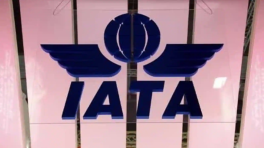Banking: A buy-operate-dilute model
Corporate banks are not ideal. But capital is scarce too. Find a balance

A proposal by the Reserve Bank of India's (RBI)'s internal working group to allow large corporate houses as promoters of banks is being widely criticised. Experts have cited several problems — connected lending in a context of weak supervision; additional stress on an already weak supervisory system in a crisis; further concentration of economic power in large corporate houses; and delayed bankruptcy recognition and resolution of related parties.
These arguments are well-known, and RBI, too, is well-aware of them. But there is a shift in its stance. The question is why.

Opposition parties suggest that this is due to crony capitalism — the Bharatiya Janata Party (BJP)-led government, it is alleged, is helping its corporate friends, through a pliant RBI. But given the BJP's increasing dominance, built on electoral success, it doesn't need to do such risky favours. It can make demands from corporates without taking such risks for them.
What problems could the RBI — and perhaps the government — be attempting to solve here?
First, several banks and non-banking financial companies (NBFCs) are staring at failure due to the present crisis in the financial sector. Facing fiscal constraints, the government may not support all public sector banks, preferring to sell some of them. Private banks are fragile because depositors can shift their money to public sector banks at the first hint of trouble.
NBFCs have anyway been in a crisis. India does not have a comprehensive resolution mechanism for financial firms — the Financial Stability Board gives India the lowest score among all G-20 countries.
Second, bank credit growth has been sluggish for years. Public sector banks and foreign banks have clocked almost zero real growth in the last five years. Despite at least ₹3 lakh crore of capital infusion, public sector banks seem wary of lending, perhaps because of the threat of action by law enforcement agencies, and because of continued balance sheet stress. The economic slowdown and regulatory issues have made foreign banks more cautious. Private banks were driving credit growth, but Covid-19 has predictably slowed them down.
Liquidity support cannot paper over solvency concerns for too long. Risk capital is needed to resolve issues in financial institutions on the verge of failure; for banks to lend more; and to create more banks. But capital is scarce. Foreign banks have no appetite for failed public sector banks, and may only buy some of the failed private sector banks. Only a few private banks in India can buy other banks, and most of them would also be busy dealing with the fallout of the current crisis. The resolution process works if there is a pool of buyers for failed institutions.
If India does not have many options, the Centre and RBI cannot avoid responsibility. India's growth story has gone astray. Many reasons for this are attributable to policy choices that pre-date the Covid-19 crisis. Now, faced with radical uncertainty, the government and RBI are trying to increase their options.
In this backdrop of the crisis in banking, can some challenges be mitigated by corporate entry? India needs more and larger private banks, and at least a few public sector banks need to be privatised. Corporate entry can help with the resolution of failed banks and the creation of more banks. But it can also create other problems. Large corporate houses can game the system to inordinately benefit themselves while creating problems for financial stability and consumer protection.
Are these risks justified by the short- to medium-term benefits this move may create? Perhaps we can think of this move in three stages.
First, corporate houses take over failing banks over the next two to three years, and start select new banks. During this time, an independent resolution framework for failed financial firms is built and RBI reform is prioritised.
Second, for say 10-20 years, corporate houses run the banks, and RBI manages the risks of connected lending by corporates. It will fail to some extent, but perhaps not abjectly. Mechanisms of market-led monitoring must be developed. Development of bond markets and credit derivative markets could help monitor the health of banks.
Third, after corporates have made a reasonable return on their investments, gradually dilute corporate stakes to shift towards widely-held ownership. This will require the exercise of power over powerful corporate houses. India must also reduce reliance on banks and develop markets for debt securities.
These can be seen as buy-operate-dilute projects — buy stressed banks, operate them till a reasonable return on investments is made, and dilute shareholding thereafter. But there are questions: How well can the risks of stage two be managed? Will the political economy allow stage three? Will necessary reforms be implemented?
Corporate entry may become a mistake just like bank nationalisation was, albeit with different structural problems. But the Indian State has often exhibited autonomy from private capital —sometimes even asserting itself to make undue claims.
So, depending on how much autonomy the State maintains, it can command dilution of corporate stakes at a suitable time.
If the ideal solution is not feasible within an acceptable timeline, governments choose suboptimal solutions. For instance, getting public sector banks to finance India's infrastructure boom was not ideal, but that is where the money was. India built a lot of infrastructures, and banks took a hit on the projects that failed — many due to policy failures. Such second-best solutions are common in developing countries, and can often lead to improvement. But sometimes the solution can be worse than the problem. India must navigate this policy dilemma carefully.
At stake is the trust that India's financial system runs on.
Suyash Rai is a fellow at Carnegie India.
Disclaimer: This article first appeared on Hindustan Times, and is published by special syndication arrangement.


 Keep updated, follow The Business Standard's Google news channel
Keep updated, follow The Business Standard's Google news channel














